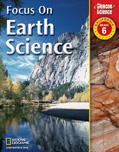1.
4.e A) changing B) higher C) lower D) equalized 2.
4.a A) winds blow across the surface of the water B) more dense seawater sinks beneath less dense seawater C) the Coriolis effect is in action D) surface water begins to warm up 3.
4.e A) stays the same B) decreases C) increases D) falls 4.
4.e A) decreases B) increases C) falls D) stays the same 5.
4.e A) sun B) plants C) rain D) weather 6.
7.f A) subduction B) transform C) volcanic D) continental 7.
3.c A) Condensation B) Absorption C) Conduction D) Convection 8.
4.e A) fog B) rain shadows C) winds D) heat 9.
3.d A) direction B) frequency C) energy D) pitch 10.
4.b A) It provides necessary gases to support life. B) It absorbs and distributes warmth. C) It protects living things from X-ray radiation. D) It keeps us from floating into space. 11.
2.c A) new plants growing on the beach B) changing shape of the beach C) deep water D) dry habitats 12.
4.e A) thermosphere B) stratosphere C) ionosphere D) troposphere 13.
4.e A) the distance from the Earth to the Sun B) the tilt of Earth's axis C) the position of the Moon D) the orbit of the Moon around the Sun 14.
4.a A) sea breeze B) land breeze C) valley breeze D) mountain breeze 15.
4.a A) clay-like B) sandy C) rocky D) full of soil 16.
4.b A) radio B) infrared C) light D) ultraviolet 17.
4.e A) 11 B) 84 C) 50 D) 99 18.
4.a A) waves B) density currents C) longshore currents D) hurricanes 19.
4.e A) neither mediterranean nor highland B) only mediterranean C) only highland D) mediterranean and highland 20.
4.a A) land animals B) the Sun C) dissolved gases D) land plants 21.
3.d A) ultraviolet radiation B) magnetism C) the electromagnetic spectrum D) visible light 22.
7.f A) a new seafloor B) underwater mountains C) the continental shelf D) the continental slope 23.
4.a A) sunlight B) X-ray radiation C) ultraviolet radiation D) ions 24.
3.d A) global warming B) the greenhouse effect C) the ozone layer D) geothermal energy 25.
4.e A) they know about them far in advance B) they often occur during lightning storms C) they last for extended periods of time D) there is often little warning before they occur 26.
3.c A) type B) speed C) location D) size 27.
4.a A) size B) type C) location D) speed 28.
4.a A) no marine life B) little marine life C) lots of marine life D) only marine plants 29.
7.f A) at the shoreline B) at the ocean floor C) at the bottom of the continental slope D) at the mid-ocean ridge 30.
7.f A) They are the same length. B) continental slope C) continental shelf D) Their lengths differ. 31.
4.d A) the Davidson Current B) the California Current C) the Southern California Bight D) northern glaciers 32.
4.e A) landform B) longitude C) climate D) latitude 33.
4.d A) Surface currents B) Density layers C) Surface layers D) Density currents 34.
4.e A) a storm B) a high pressure zone C) a front D) a hurricane 35.
4.d A) reflection B) convection C) conduction D) absorption 36.
2.c A) sediment B) shortshore C) tidal D) longshore 37.
4.e A) Air masses B) Convection zones C) Jet streams D) Fronts 38.
4.b A) energy B) sound C) compressional D) electromagnetic 39.
3.d A) pitch B) frequency C) amplitude D) compression speed 40.
4.a A) the highest low-tide line and the highest high-tide line B) the highest low-tide line and the lowest high-tide line C) the lowest low-tide line and the lowest high-tide line D) the lowest low-tide line and the highest high-tide line 41.
4.a A) volcanoes B) wind C) tides D) gravity 42.
2.c A) wave B) tide C) current D) beach 43.
4.a A) Sunlight B) Water vapor C) Evaporation D) Condensation 44.
4.a A) Evaporation B) Condensation C) Sunlight D) Water vapor 45.
3.c A) Collision B) Conduction C) Radiation D) Convection 46.
4.e A) density B) conduction C) pressure D) temperature 47.
4.e A) occluded B) warm C) stationary D) cold 48.
4.a A) The equator receives the most direct sunlight. B) because all currents, warm and cool, begin near the equator C) Scientists are still unsure. D) because cool air rises and warm air falls 49.
A) tsunami activity B) warm water along the coast C) cold water along the coast D) the California landscape 50.
2.c A) tides B) waves C) currents D) all of the above 51.
4.a A) cooler, warmer B) warmer, cooler C) cooler, humid D) warmer, cloudier 52.
4.a A) causing the region to experience inhospitable conditions B) providing leisure activities C) increasing tourism D) absorbing or giving off heat 53.
4.e A) over a long period of time B) at a specific time and place C) at a specific temperature D) over a short period of time 54.
4.a A) upwellings B) the Coriolis effect C) stationary objects D) wind 55.
4.e A) Relative humidity B) Dew point C) Convection current D) Temperature 56.
4.e A) aerosol state B) relative humidity C) dew point D) evaporation spot 57.
4.d A) precipitation B) humus C) omnivores D) air currents 58.
4.a A) wind B) the Coriolis effect C) the Sun D) upwellings 59.
4.e A) water pressure B) temperature C) wind speed D) wind direction 60.
4.e A) jet streams B) the heating of Earth's surface C) the Coriolis effect D) ultraviolet radiation







